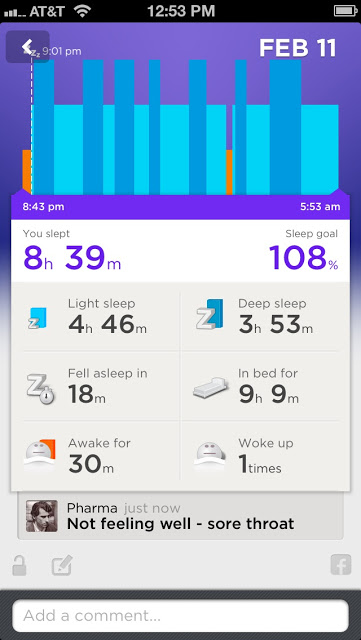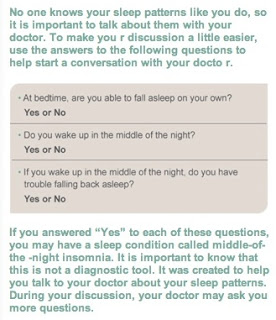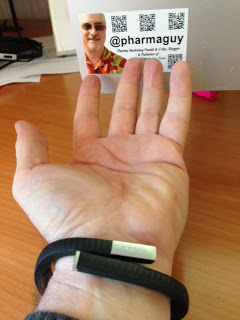I just received an email ad from Purdue Pharma entitled “Learn about a prescription treatment specifically for middle-of-the-night insomnia.” It’s an ad for Intermezzo, “the first and only prescription sleep aid approved by the FDA for use as needed to help treat adults with insomnia when they have difficulty falling back to sleep after waking up in the middle of the night.”
That last part, which I italicized, is a mouthful. So Purdue came up with “Middle-of-the-Night Insomnia,” a new name that makes it sound like an “official” medical condition.
In case you don’t know if you suffer from “Middle-of-the-Night Insomnia,” Purdue included a little “symptom quiz” in the email:
As with most such quizzes, practically everyone will end up discovering they “may” have the condition (see, for example, “Do Pharma Marketers Encourage Consumers to Self-Diagnose?“). Of course, Purdue was careful to assure me that this is NOT a diagnostic tool.
These days, however, any law-abiding citizen such as myself can get access to a diagnostic tool that will answer all Purdue’s questions UNEQUIVOCALLY! It’s called UP by Jawbone. UP is “a uniquely trendy wrist-worn pedometer” that communicates with my iPhone. It resembles a black Livestrong-style bracelet — except it’s not tainted by doping controversy. Here’s what it looks like on my wrist:
When I sync the UP bracelet with the associated app on my iPhone, I get data and charts about my daily activities, including my sleeping habits. The night before last, for example, UP recorded this:
I wasn’t feeling too good (see my comment), so I went to bed rather early (8:43 PM) that night. It appears that I fell asleep rather quickly, but not on my own — I took some NyQuil. I went in and out of deep sleep all night because of a sore throat and I even woke up at one point — probably to blow my nose. It appears, however, that I was able to get back to sleep, but I am not sure this chart indicates I had “trouble” doing so.
For me, UP replaces an app called “Sleep Cycle” that I once used to measure my sleep patterns (see here). Wearing a bracelet is better because I don’t have to place my iPhone on the bed or start up an app to start recording. Also, the bracelet measures what I do personally, not what anyone else in the bed is doing, which was a problem with Sleep Cycle.
Now that I am part of the “Quantified Self” movement, which refers to people who incorporate technology to capture data about their daily activities, I don’t have to rely on Purdue’s subjective little symptom quiz to help me talk to my doctor about my sleep patterns — I can just show her the charts on my iPhone!
I need to make a couple of other points about Purdue’s email marketing message.
In marketing, one always hears advice to deliver “the right message to the right person at the right time.” Purdue got two of them right — the right message was delivered to me at the right time. Unfortunately, the email was addressed to “Mike.” There’s no “Mike” here.
I also hear “reach and frequency” mentioned in marketing circles. I don’t know how many people Purdue “reached” with this email ad, but I do know that I received THREE identical messages within one hour. I think that’s not an effective implementation of the frequency principle.
Since the message was not personalized and since I am receiving multiple messages, I can classify this campaign as SPAM – unsolicited, frequent email. Although the message includes the required opt-out statement — “If you no longer wish to receive e-mails from myIntermezzo.com, unsubscribe here.” — there is no active link and clicking on “unsubscribe” or “here” does nothing.
Purdue’s privacy policy says my information is stored for the “lifetime of the database unless you request that it be removed.” The only recourse I have, it seems, is to call them by phone. I will leave THAT for another day and another post to this blog.











![6 Digital Tools at the Center of Healthcare Digitalization [INFOGRAPHIC]](http://ec2-54-175-84-28.compute-1.amazonaws.com/pharma-mkting.com/wp-content/uploads/2021/04/6DigitalTools_600px-100x70.jpg)




